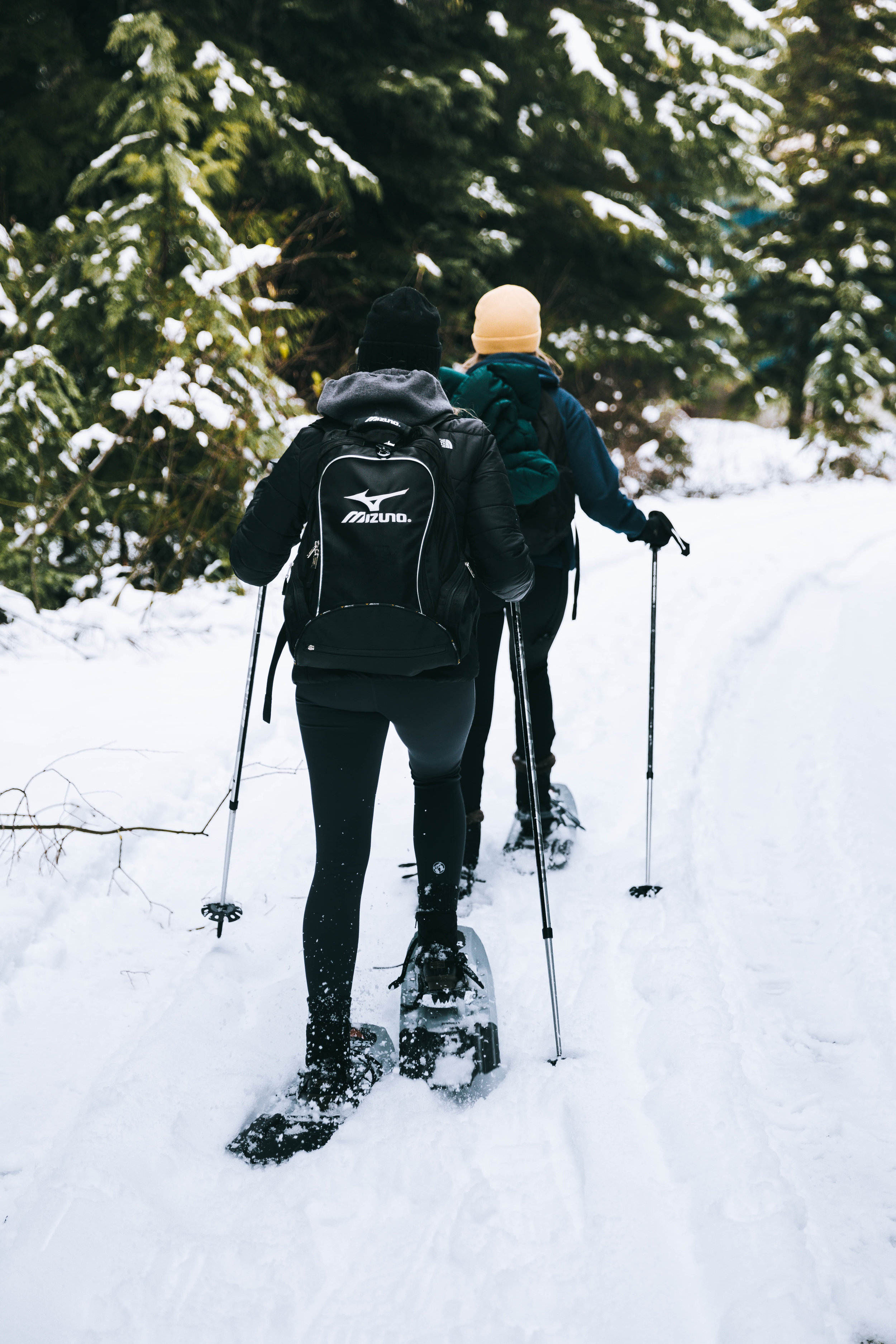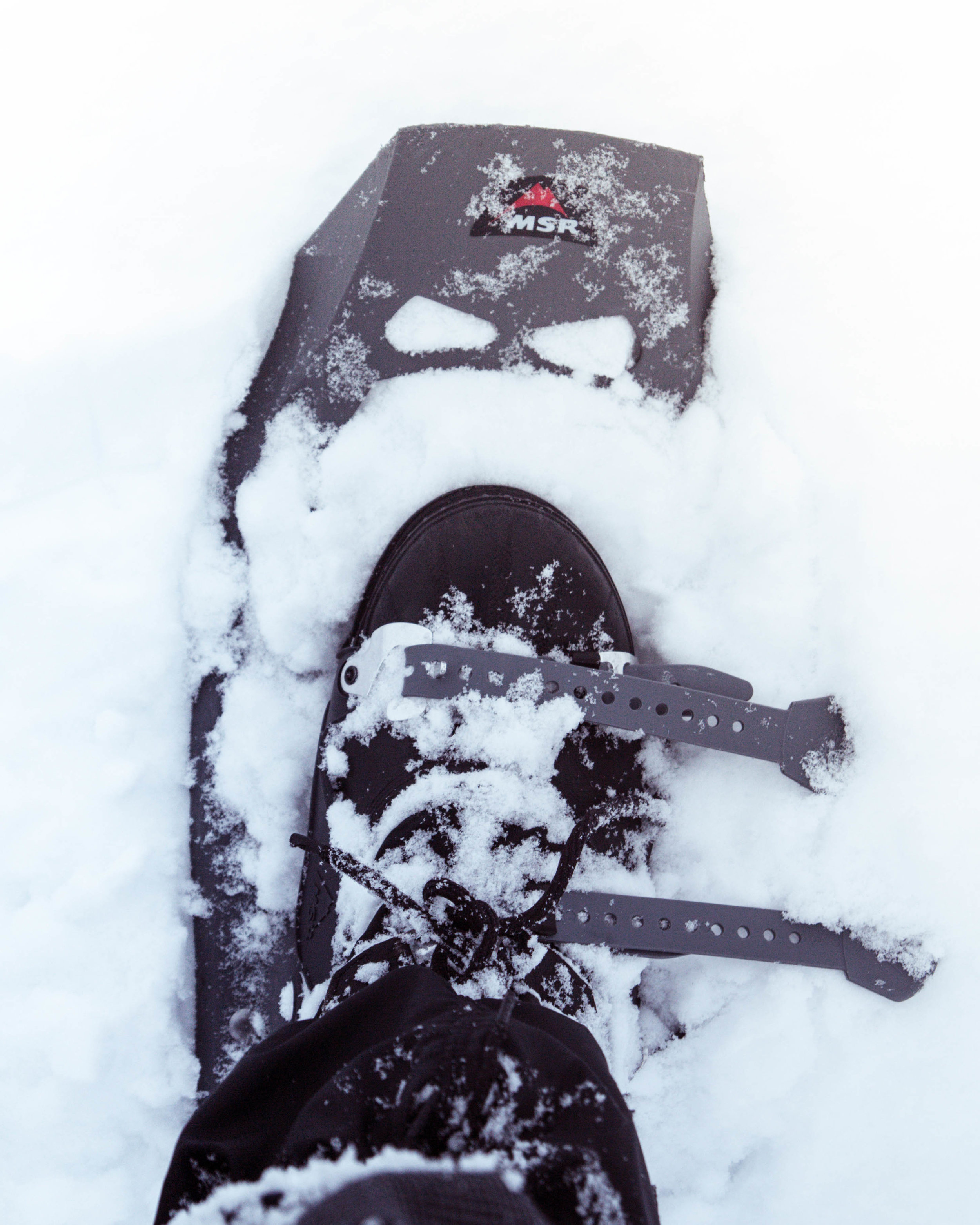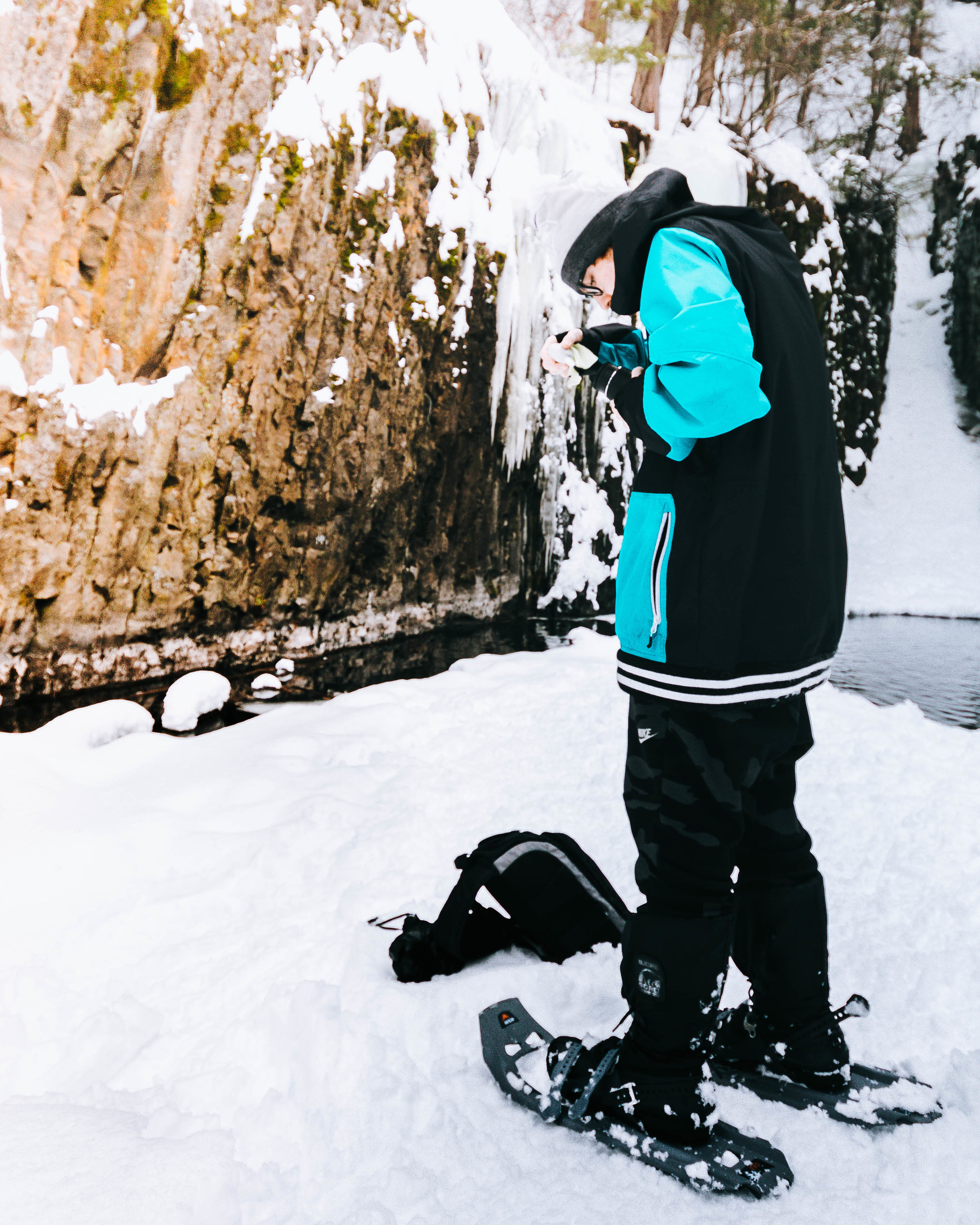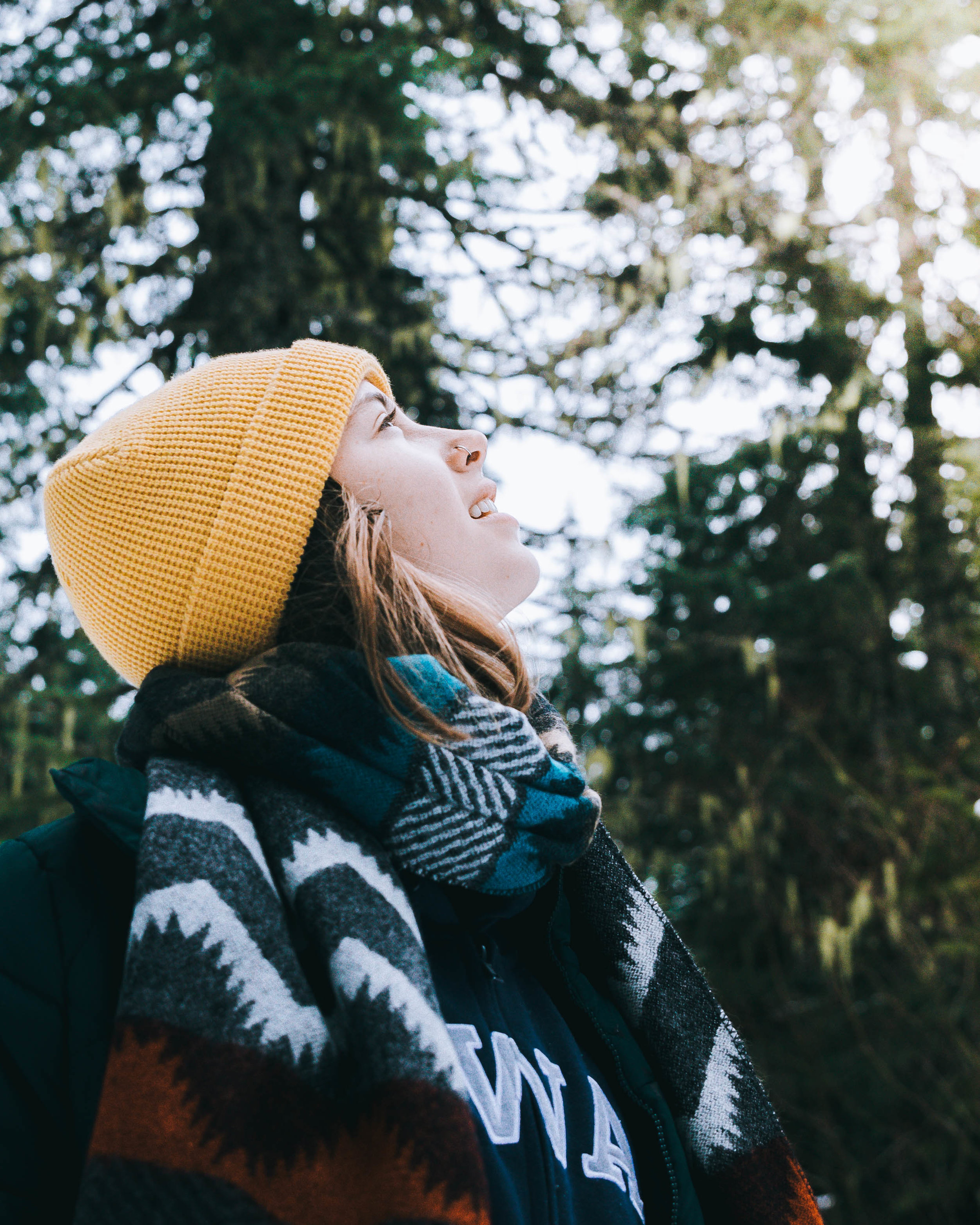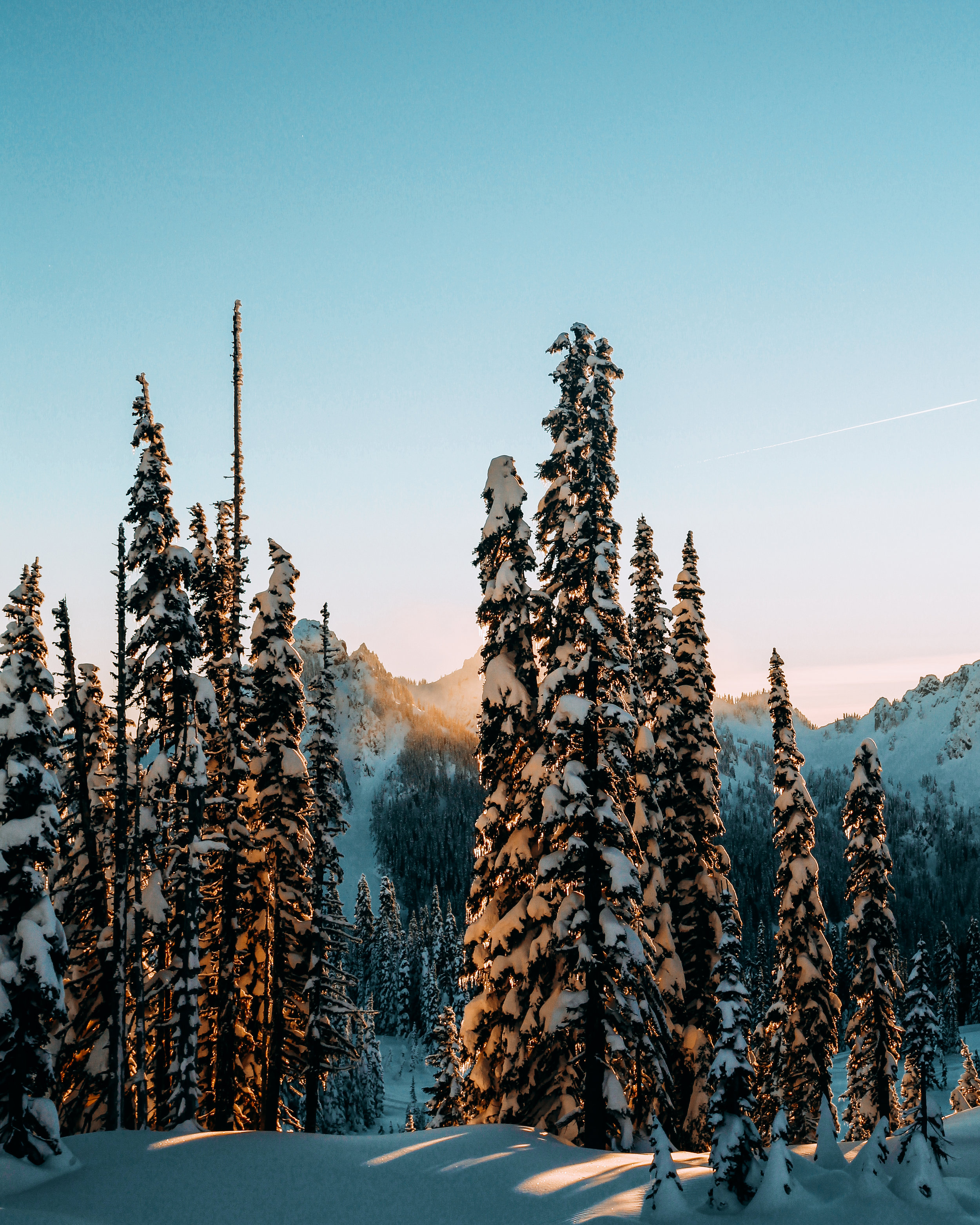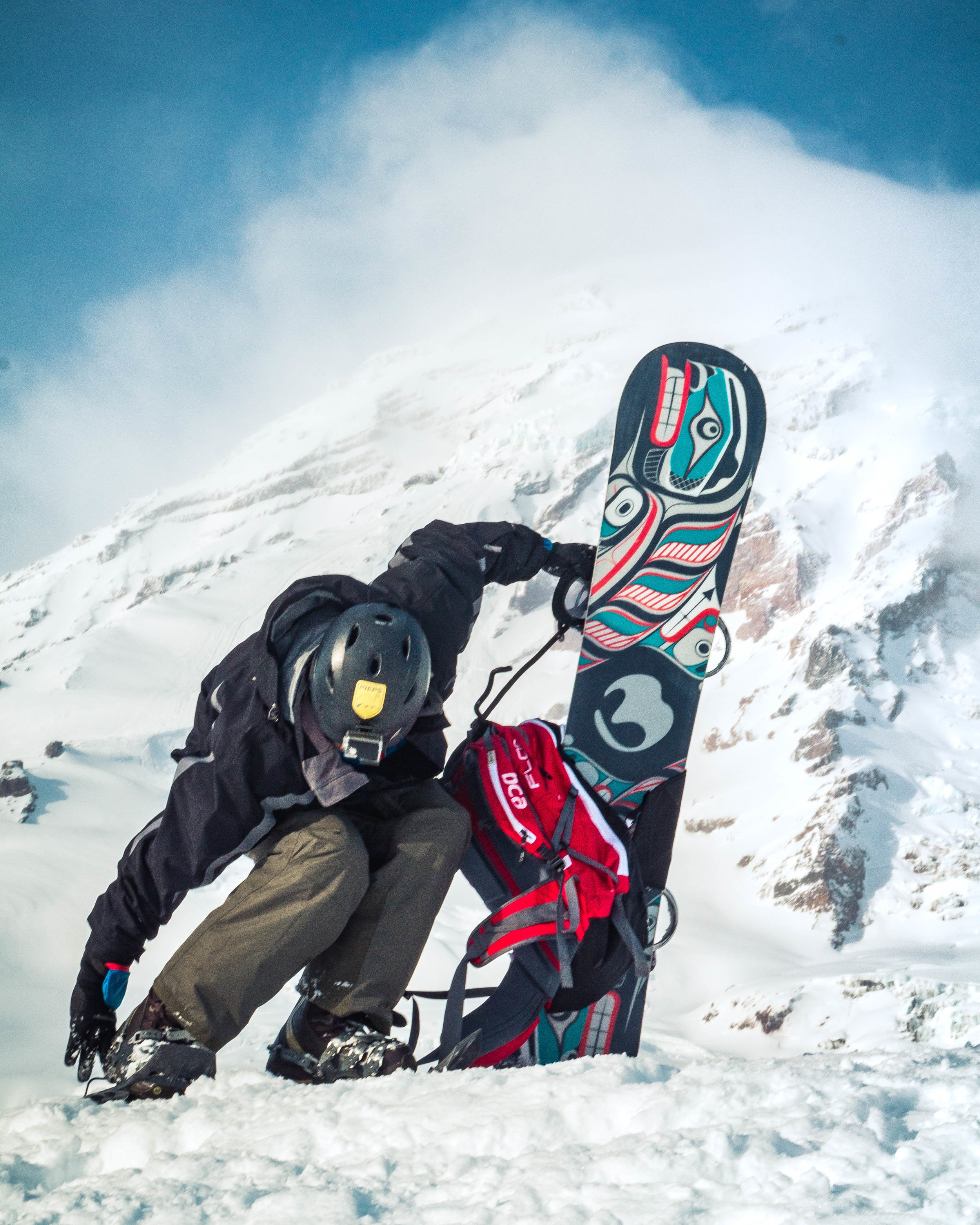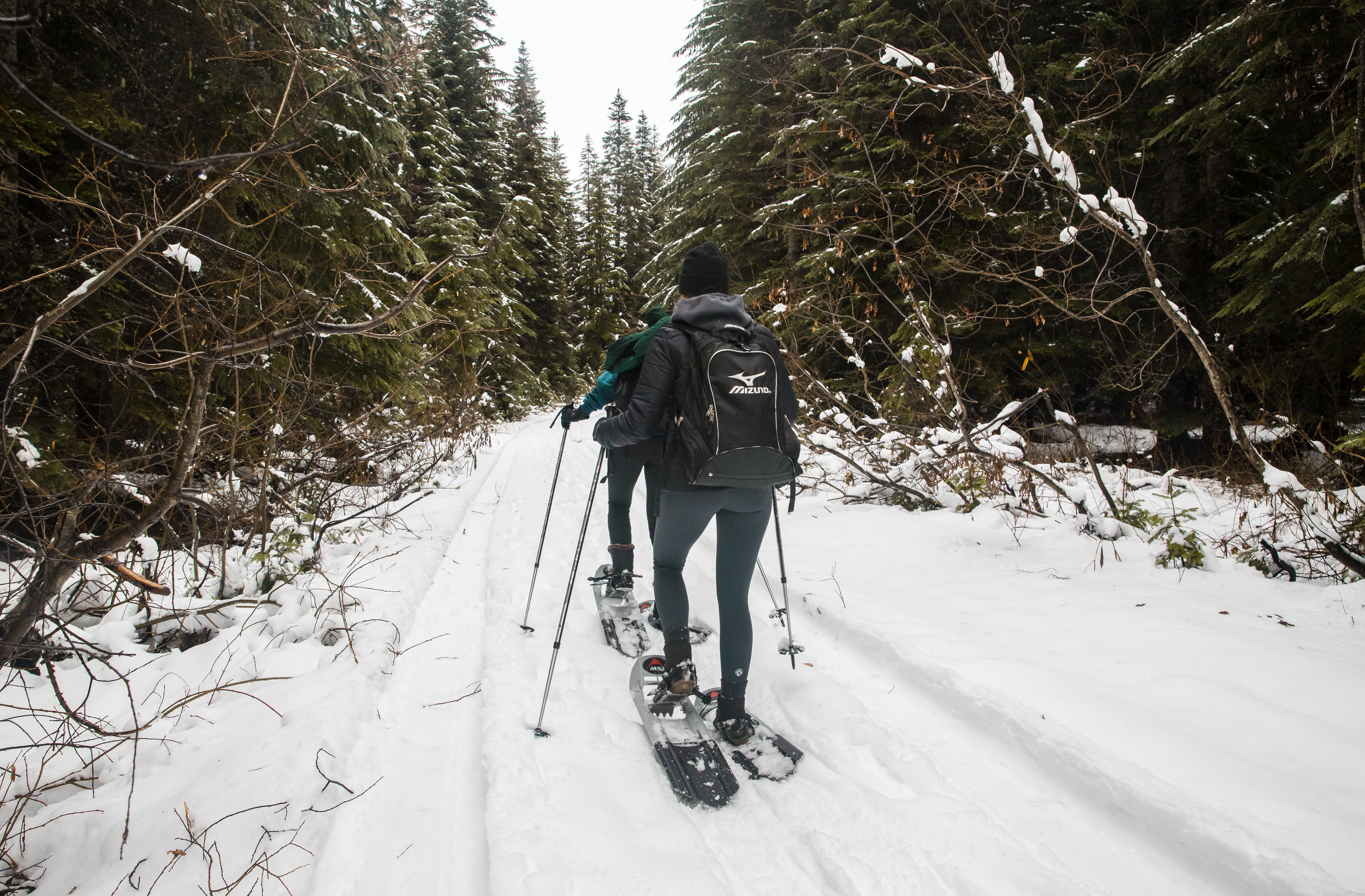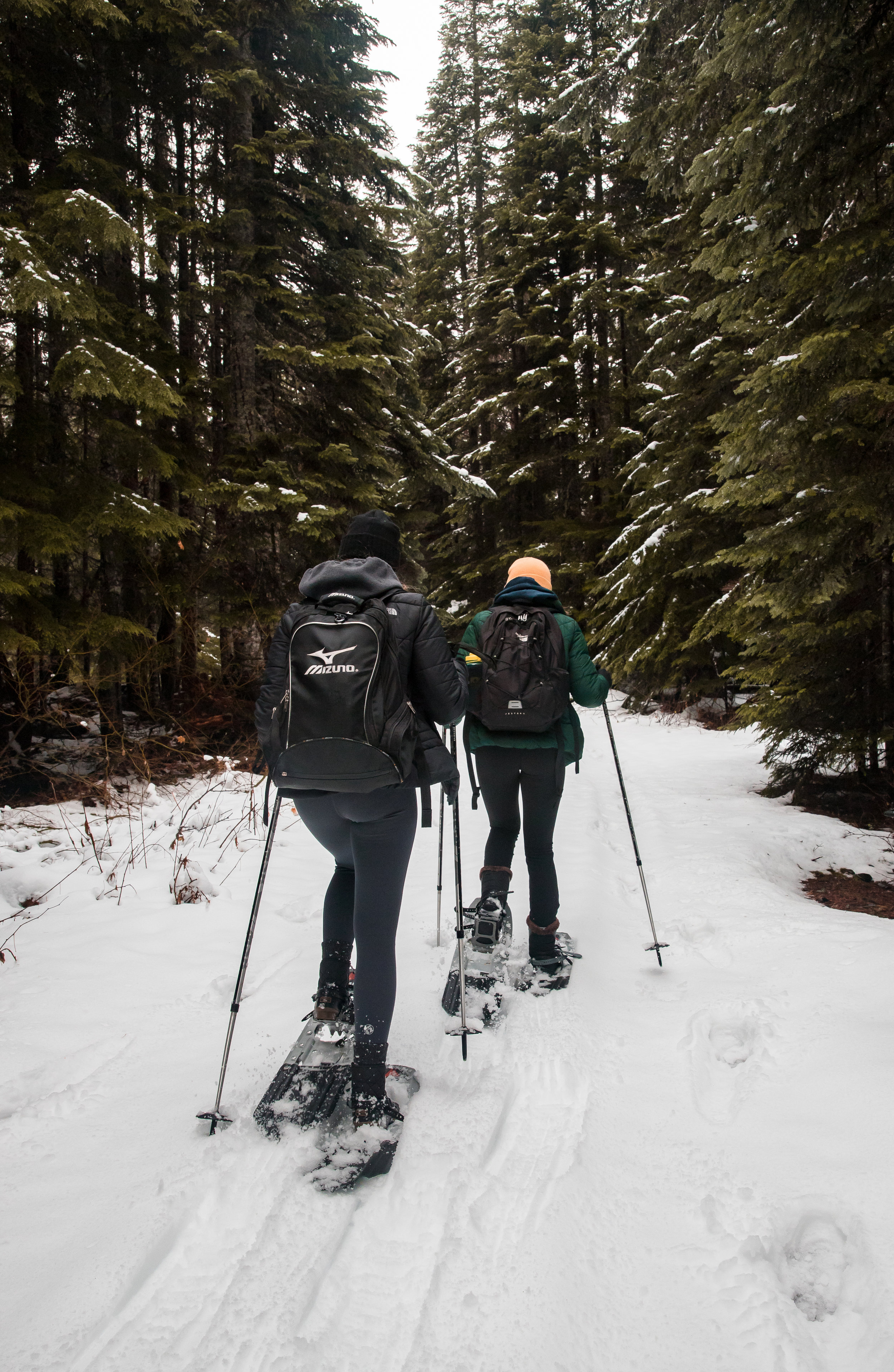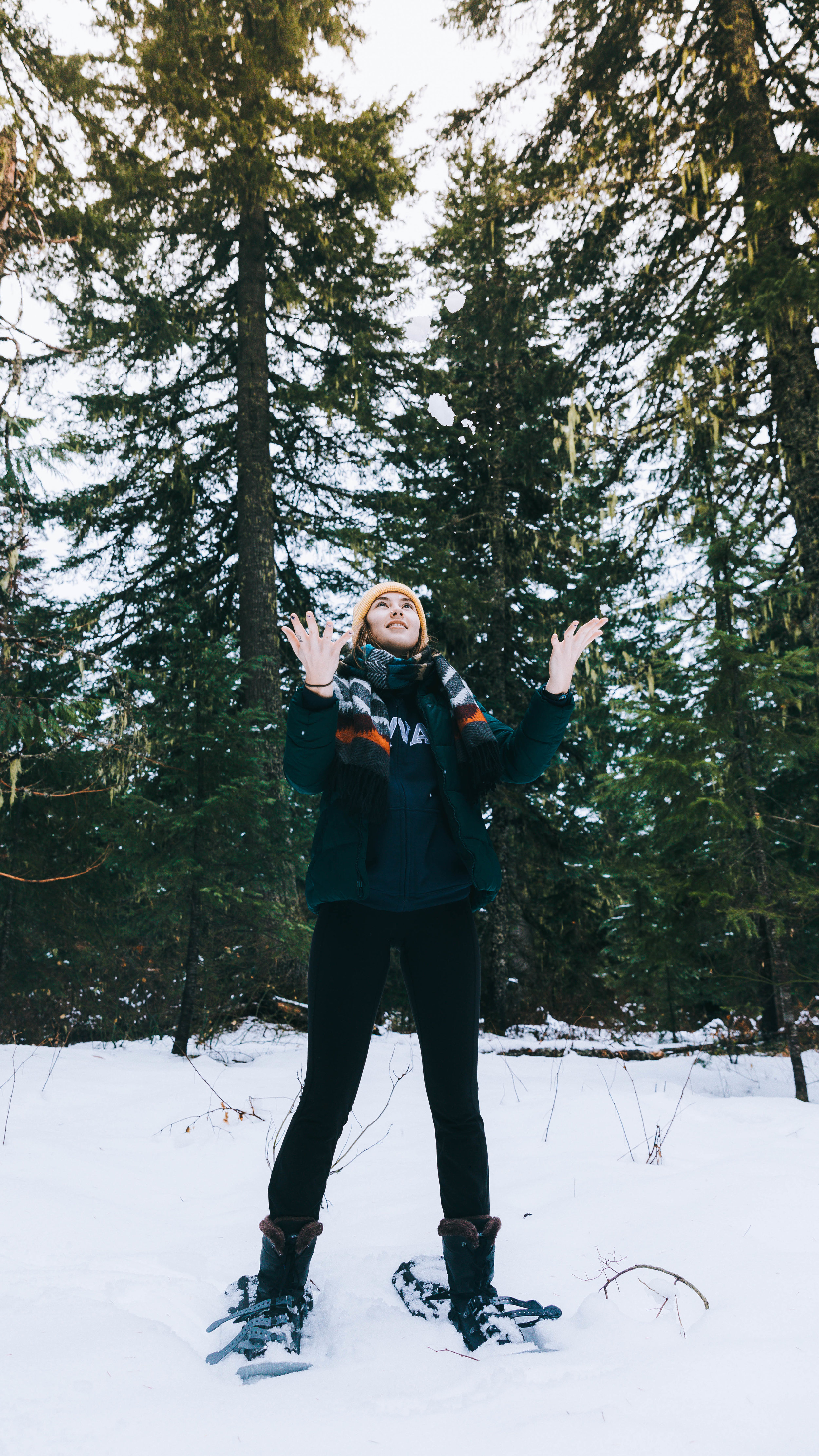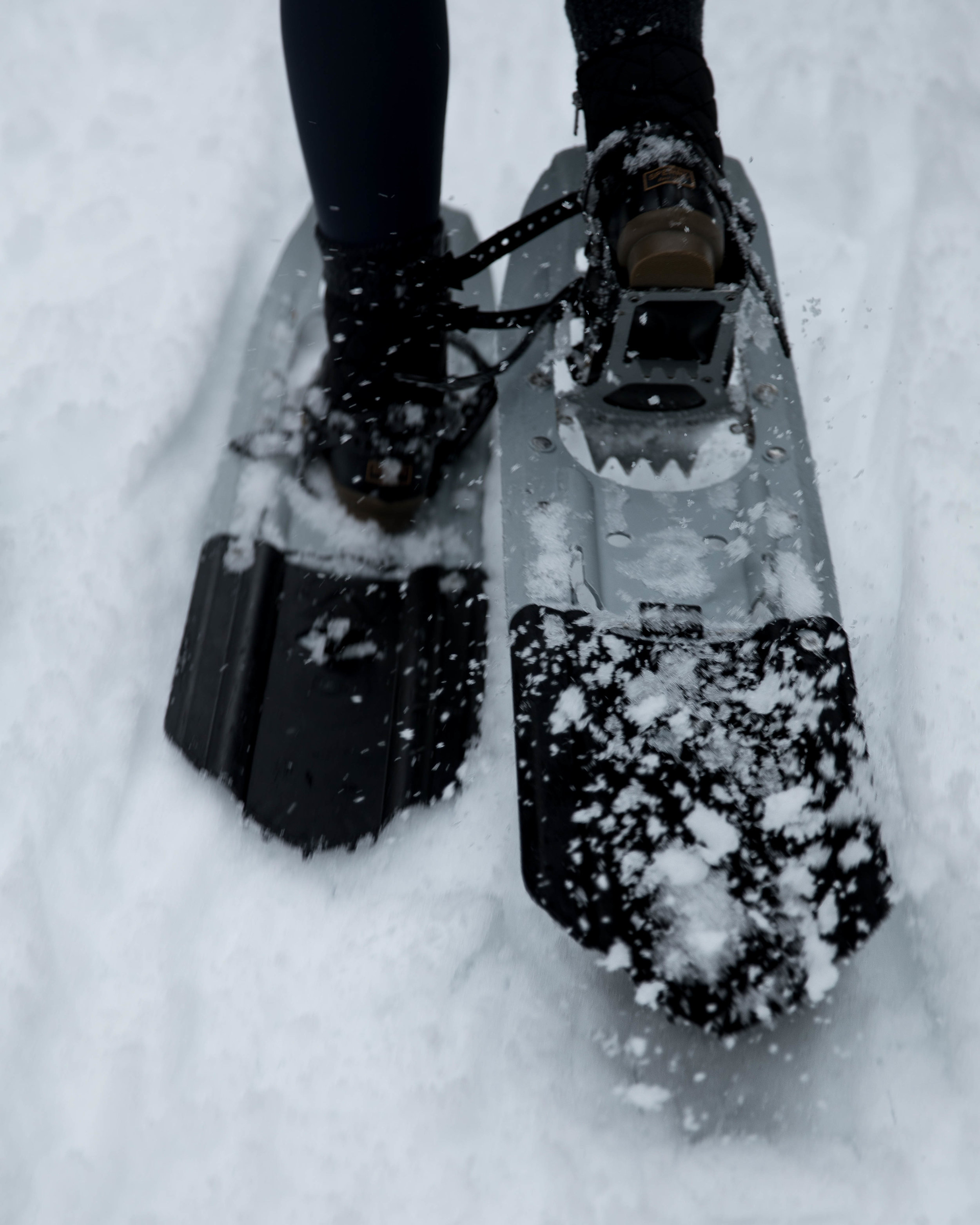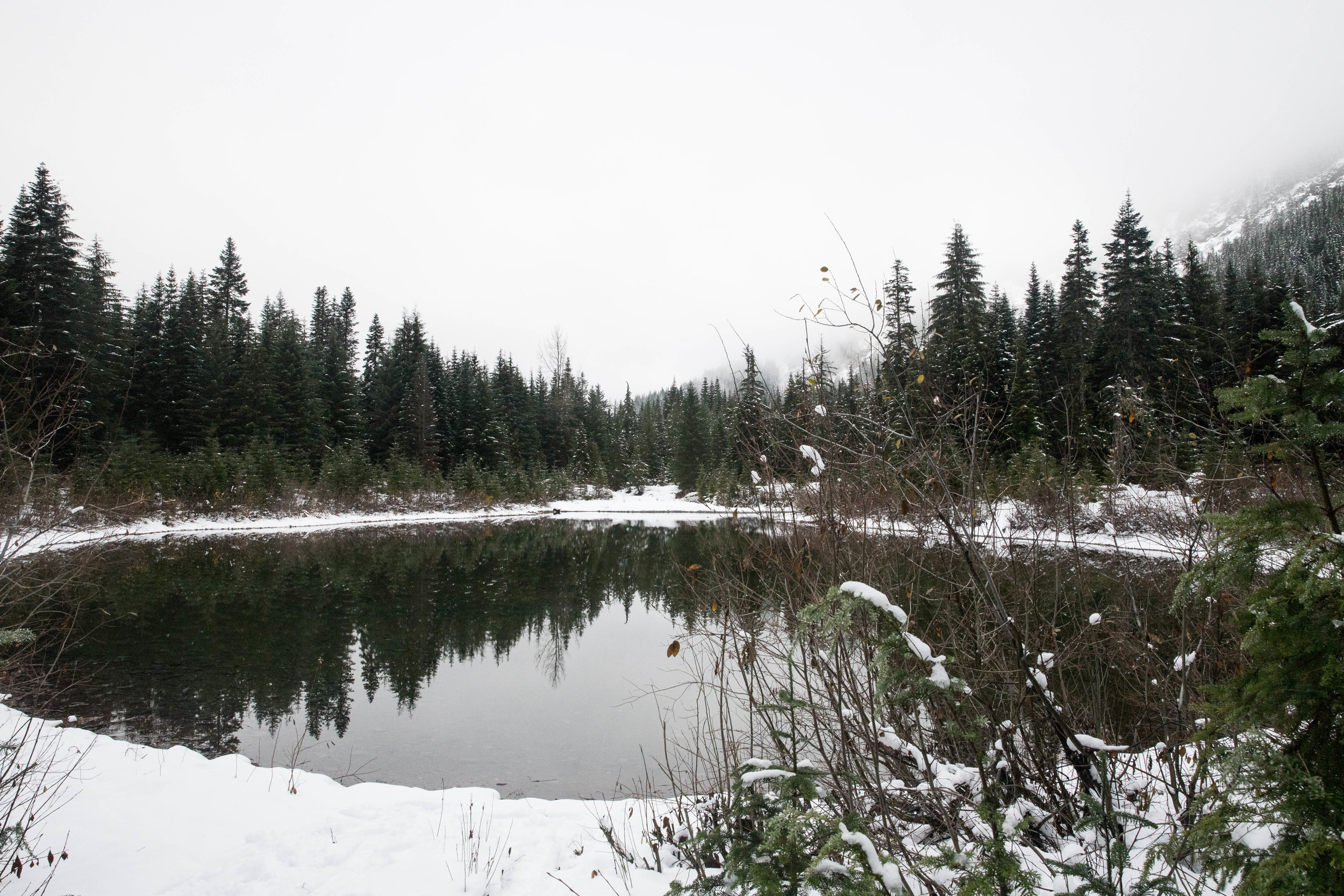The Basics of Snowshoeing
Story By Megan Schrenk
The sun rises low on the horizon, molded leaves litter the damp, peaty ground, and crisp, frost-bitten air foretells the inevitable snow to come. Around this time of year, many hikers are cleaning their gear and hiding it away for the dark, cold winter.
Nature’s beauty does not go into hibernation, though, just because several feet of snow blankets the ground. Fields of wildflowers turn into expanses of pristine white, rushing rivers freeze in meticulously crafted patterns. To experience this beauty, a different approach is needed from the summer time hiking boots. Snowshoeing enables hikers like you the ability to continue exploring year-round, without worrying about sinking into waist-high snow.
Hiking and snowshoeing do have many similarities, and just as many differences. From specific gear, to safety, and even different trailheads, snowshoeing is its own world, with its own rules. Dive into the world of snowshoeing with the following advice from two snowshoeing enthusiasts with a combined 15 years of experience.
Essentials
Before setting off into a winter wonderland, Ally Reinmuth who has been snowshoeing for over eight years, suggests researching the types of terrain that will be crossed. There are three commonly categorized terrains, including:
Flat: “These are relatively flat, even walking trails,” Reinmuth says. “They typically are not technical, or require advanced gear.”
Rolling: “Rolling terrain requires shoes that are equipped to handle more steep, icy patches of land,” continues Reinmuth. Think more moderate to advanced skill level, along with the endurance to push forward.
Mountain: “Mountain terrain snowshoes are for those who enjoy hiking in the back country where there is little trail to follow,” says Reinmuth. Unless the snowshoer has prior experience, and has been versed in avalanche safety, she does not recommend this terrain or types of snowshoes for those looking for a fun day hike.
There’s more to equipment than just snowshoes, especially if frozen digits are not on your bucket list of things to experience. Holly Dunham-Wheeler, another snowshoeing enthusiast with more than six years of experience, recommends the following to fully enjoy the snow:
Waterproof boots
Gaiters
Poles with baskets
Locomotion
Up, down and flat are the three planes that snowshoers trek on.
Flat: “Start off with a wider stance than you’re typically used to,” says Reinmuth. “To make sure your snowshoes don’t clank together, your legs need to be a little wider than hip-width.” From here, it’s all about walking.
Up: How you progress up a slope depends on the conditions you’re entering. In powdery snow, Reinmuth explains you have to “Plant the front of your snowshoe into the powder firmly. The tails [of the snowshoe] should be pointed downhill.” She also recommends that if the snow gives too much and creates a hole, to find another route. Powder snow can be the most difficult to navigate. Crustier, hard pack snow, can be much easier maneuver on. “In those conditions, you’re relying on the crampons on your snowshoes and your poles to maintain traction,” says Reinmuth. This can also include moderate to steep slopes, in which case, Reinmuth recommends to “use your Televator to ease some of the pressure off your calves.” A televator is a heel lifting device found on many snowshoes.
Down: “No real trick to going downhill,” jokes Reinmuth. “Make sure you’re using your poles and keep your knees soft. If your snowshoes have heel crampons, keep your weight slightly back. Otherwise, if they do not, keep your weight over your feet. If you slip, just sit down.”
Safety
The mountains are unpredictable in the best of circumstances. Throw in winter weather and a quickly changing forecast, they can be downright deadly. Reinmuth and Dunham-Wheeler provide some safety tips to make sure you stay safe while exploring.
Research is key. “Know the conditions you plan to be out in,” says Dunham-Wheeler. If you are unsure about how to prepare for certain conditions, speak up and ask questions. REI stores, and other outdoor stores, typically have someone on staff who is knowledgeable about winter sports suggests Dunham-Wheeler.
“Call up the local ranger station,” Reinmuth recommends. This is where you can find the most current snow reports. “Also find out about avalanche danger and if there will be blasting in the area you want to go hiking into,” she elaborates.
Avalanches are one of the deadliest forces of nature in the backcountry. According to Avalanche.org, "The 2016-2017 year saw four fatalities, including two backcountry tourist."
“Have a GPS device, or another sort of tracking device whenever you go into the backcountry,” says Reinmuth. “It does not matter if you’re snowshoeing, skiing, hiking, or anything. If you’re away from civilization, carry a device that can notify people to your location.”
Trails
Dunham-Wheeler advises taking your equipment to a park first to test it out before venturing off into the mountains.
“I use the Washington Trails Association’s website to find my snowshoeing trails,” says Reinmuth. They have trip reports on many trails that will give you up-to-date information on the trail you’re looking for.
For beginners, Dunham-Wheeler recommends researching trails in Teannaway, Blewett Pass, Oak Creek, White Pass, and Snoqualmie Pass.
The following list are some of Dunham-Wheeler’s and Reinmuth’s favorite snowshoe trails in Washington State:
Goat Peak (Chinook Pass)
Sand Lake (White Pass)
Cle Elum Ridge (Central Cascades)
Artist Point (Mount Baker Highway)
Snow Lake (Snoqualmie Pass)
Washington state has some of the most beautiful, intricate trails throughout the entire state. It doesn’t matter where you live, odds are there will be a trail or two near you.
Before stashing away your daypack, hiking boots, and sense of adventure for the long winter, consider other options for enjoying the beautiful outdoors. Get out and discover your nirvana in the snow-covered mountain ranges that span all of Washington, with trails that connect every corner of the state. With a pair of snowshoes, the right gear, and a heart for adventure, exploring your world can continue year-round.
Bring on the snow.
The 10 Essentials
- Navigation
- Sun protection
- Extra clothing
- Illumination
- First-aid
- Fire
- Repair kit and tools
- Food
- Hydration
- Emergency Shelter
More details can be found online at REI’s Expert Advice Journal

